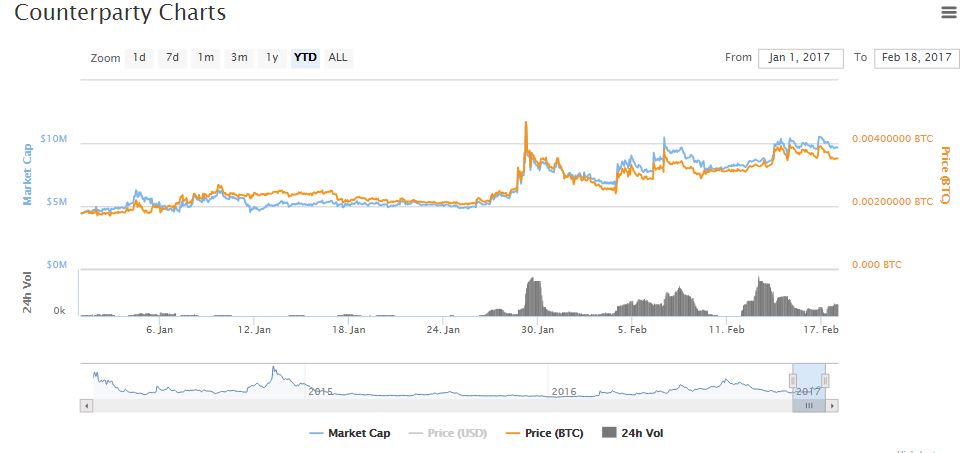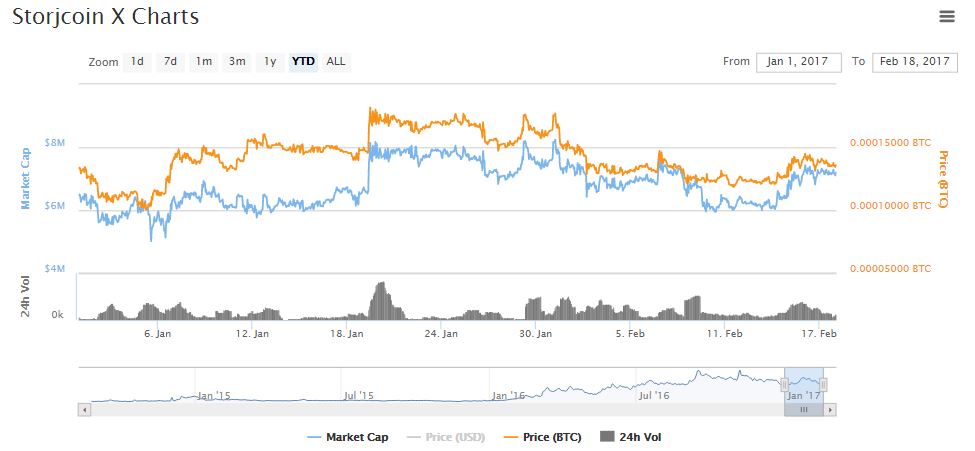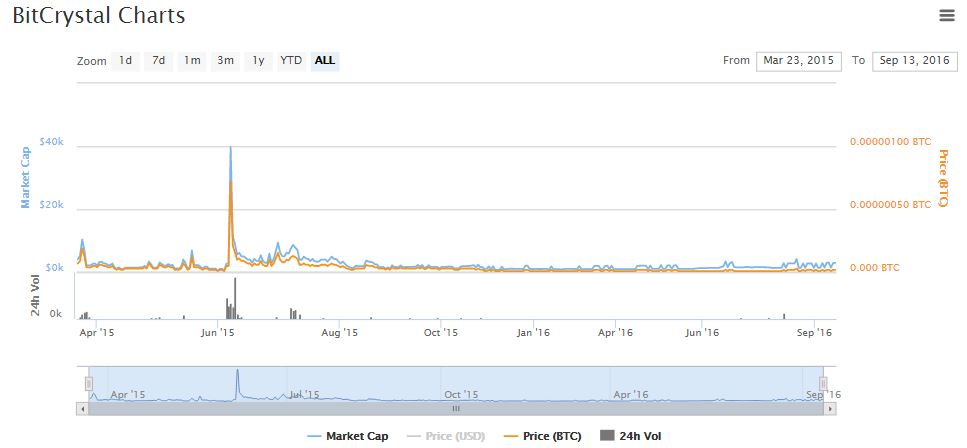The Price of Counterparty Token Multiplies by 2

Since the beginning of 2017, a blockchain-based and tokenized smart contract platform named Counterparty increased its value to twofold. It was possible to attain this in spite of consuming fourteen hours offline in late 2016.
Ethereum, Dash and Ripple are alternative blockchains that took hold of the headlines in both alternative and mainstream media in 2016. Concurrently, XCP’s (Counterparty’s token) value multiplied by two since January 1.
As Bitcoins arrived at $1,000 mark on New Year’s Day, Counterparty has accounted for a $5 million market. Presently, it has reached a $10 million market despite being a comparably under-the radar smart contract platform.
In spite of having to spend fourteen hours offline on December 2, 2016, Counterparty was still able to accomplish all of these.
Very grateful to a certain Vinny Lingham’s investment around November 2016, Counterparty was able to come into view on Shark Tank South Africa next to Bitcoin.

XCP – digital asset’s token, peaked around January 30 at .004 bitcoin (approximately $3.70) for more than US$11 million market.
Counterparty gave prominence to Storj – a project that uses its platform, which updated its white paper a short time ago. The Storj network was able to reach 1,000 terabytes of data being stored on the network.
John Quinn – Storj founder and chief development officer tells Bitcoin.com, “We are the AirBnB of your disk drive”. With AirBnB’s setup, you can actually earn somewhat like a passive income by renting out a spare capacity like an extra bedroom, a space downstairs or an apartment.
Comparing it with Storj, the network utilizes the remainder capacity from your hard drive and hand it out into a distributed cloud enabling people with excess disk drive space to earn like renting out as well.

People can earn passive income by just a few clicks and developers get to push and pull small files of encrypted data across this distribute infrastructure.
Digital game items like Bitcrystals are also traded over Counterparty which benefits the platform from increased demand for investment in virtual goods.
Bitcrystals’ communications director, Markéta Korteova’s words to Bitcoin were “We’ve come up with a vision of a true ownership of digital assets. We want to create not just a game, but a whole game economy, fairer than the classical one, where players really own their cards, or other assets.”

Counterparty permitted Bitcrystals to make tokens representing the cards and place them on the Bitcoin blockchain. “Putting our cards on the Bitcoin blockchain allows players to do the same thing with digital assets – give, sell or exchange them independently from the game itself and in a secure and transparent way,” Ms. Korteova added.
“We can set a specific token name; define a limited number of each asset and to lock it. This guarantees the asset’s rarity. Since the cards are Counterparty tokens on the Bitcoin blockchain, anyone, at any time, can verify this information.”
According to a blog posted early January, wanting to launch already complete payments and atomic swaps featured on Counterparty mainnet, the developers of Counterparty are waiting for Bitcoins to solve its scaling dilemmas (“enable Segwit”).
